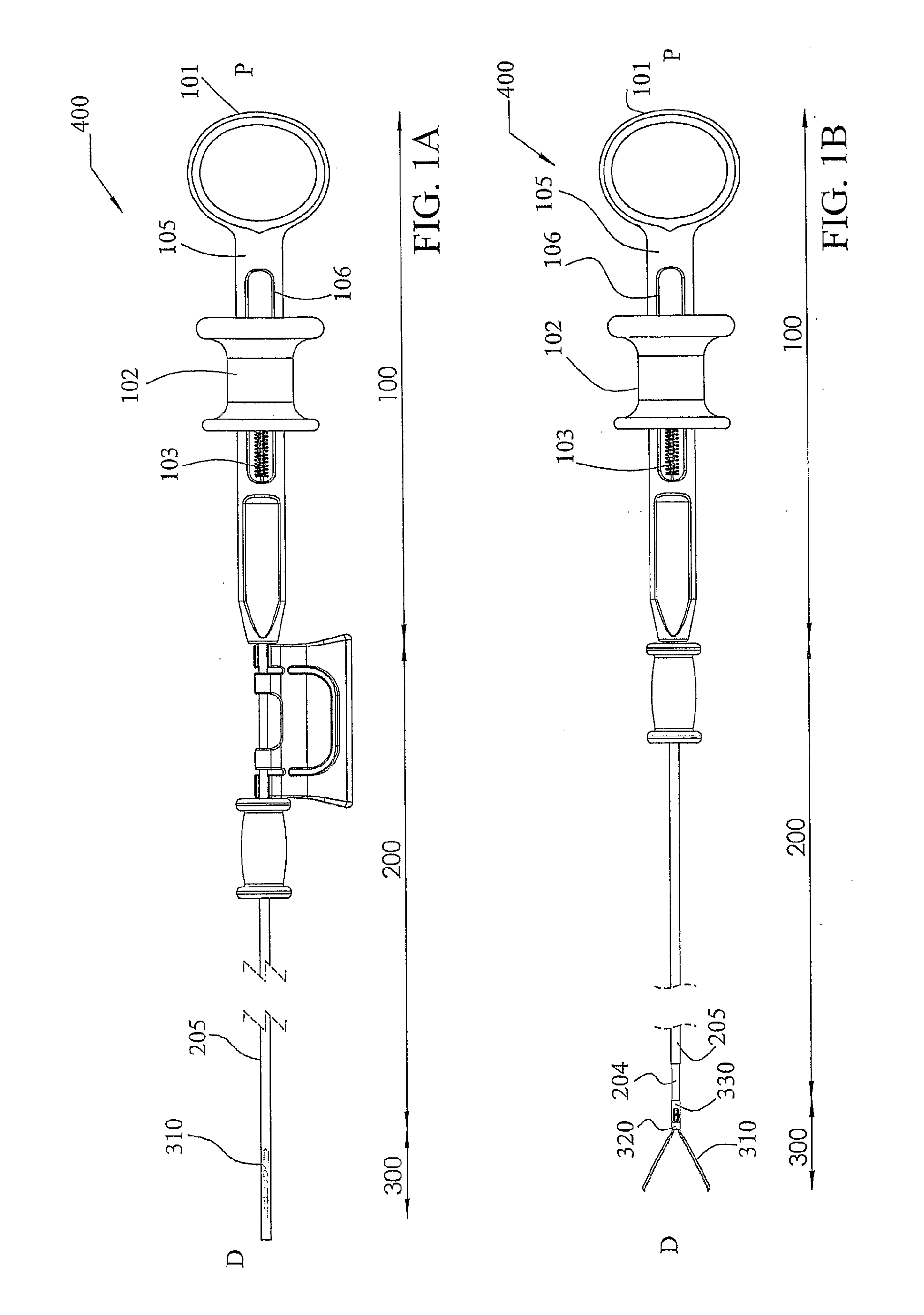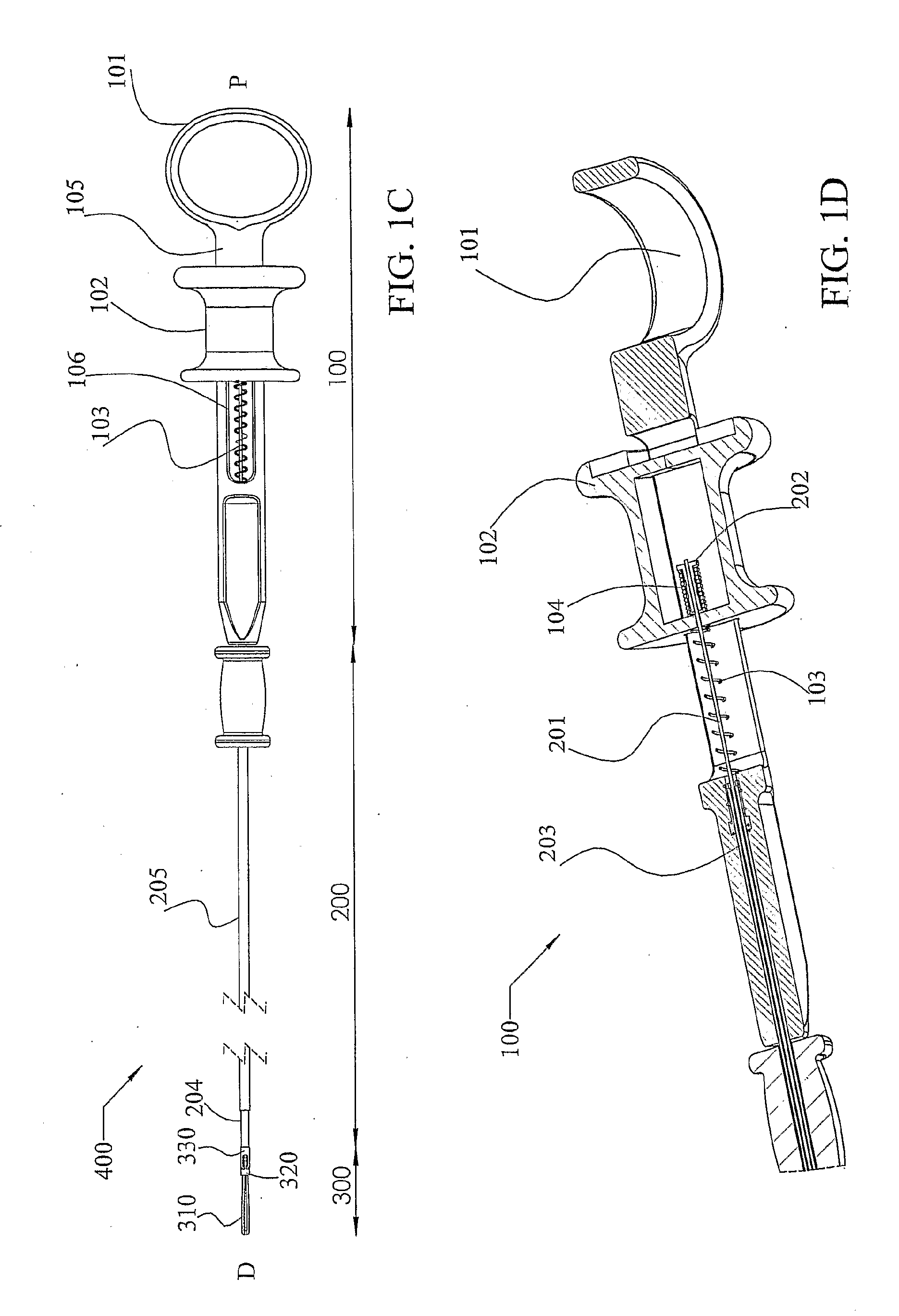Endoscopic compression clip and system and method for use thereof
a compression clip and endoscope technology, applied in wound clamps, medical science, surgery, etc., can solve the problems of affecting the vision of the physician, affecting the effect of the procedure, and causing the final cancerous tumor to grow, so as to reduce the incidence of procedure-related bleeding
- Summary
- Abstract
- Description
- Claims
- Application Information
AI Technical Summary
Benefits of technology
Problems solved by technology
Method used
Image
Examples
Embodiment Construction
[0086]The present invention provides an endoscopic compression clip (ECC) for use in endoscopic procedures, inter alia for use in inducing hemostasis. The clip allows for being opened and closed by the endoscopist an unlimited number of times until satisfactory positioning of the clip is achieved. The clip may then be locked by a clip lock element disengageably connected to the housing of a deployment assembly. The deployment assembly is part of a clip delivery system herein denoted as an applier. The clip lock element is disengaged together with the clip from the deployment assembly of the applier and holds the clip in its locked closed position while the clip is compressing tissue. The clip and clip lock element together form what herein is denoted as the compression clip assembly.
[0087]The deployment assembly of the applier includes a force transmitting element. In what is described herein the force transmitting element will often be denoted and described as a fork element, typic...
PUM
 Login to View More
Login to View More Abstract
Description
Claims
Application Information
 Login to View More
Login to View More - R&D
- Intellectual Property
- Life Sciences
- Materials
- Tech Scout
- Unparalleled Data Quality
- Higher Quality Content
- 60% Fewer Hallucinations
Browse by: Latest US Patents, China's latest patents, Technical Efficacy Thesaurus, Application Domain, Technology Topic, Popular Technical Reports.
© 2025 PatSnap. All rights reserved.Legal|Privacy policy|Modern Slavery Act Transparency Statement|Sitemap|About US| Contact US: help@patsnap.com



